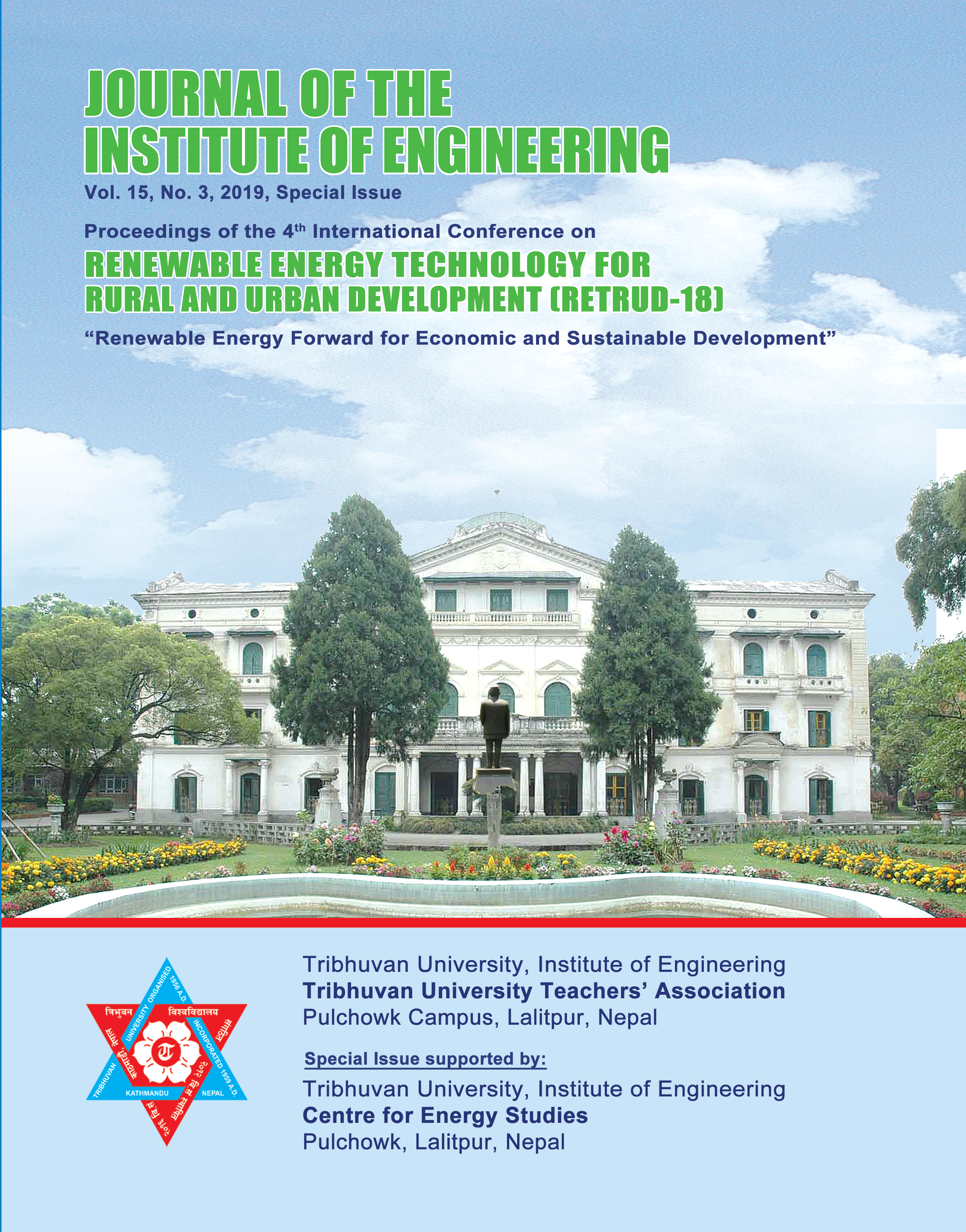Is Solar Powered Irrigation Technology Sustainable Option for Groundwater Irrigation Management in Nepal’s Terai?
DOI:
https://doi.org/10.3126/jie.v15i3.32214Keywords:
Cost Effectiveness of Groundwater Pumping, Groundwater Pumping, Solar Pumped Irrigation SystemAbstract
The most densely populated Terai Plains of Nepal with poor access to irrigation water in the dry season resulting the food insecure community. Several initiatives have been carried out to improve the irrigation facilities by extracting the ground water resources using solar, diesel, and grid operated electric pumps. Sustainability of all those initiatives and identifying the most viable solution is always in question. In this context, this study attempts to assess the cost effectiveness of these pumping technologies considering life cycle cost (LCC) in the context of Terai region of Nepal. Observation, Key informant interview (KII), in depth interview, and Focus Group Discussion (FGD) were conducted in 14 different sample sites to assess the performance of technology, life cycle cost and unit water cost (UWC) in different capacity utilization factors (CUFs), farmer’s perception, affordability, and profitability. The characteristics considered while selecting the sample sites were of size of pumping system, date of installation, beneficiary households, grid situation, solar vendor, implementing organization, major application of solar pumped water, and major cost associated. Low utilization factor of solar pumps has been observed in almost all sites. Solar pumps become expensive than diesel pump, if it is operated at less than 45% CUF. Grid operated electric pumps are found cost effective than diesel and solar, if gridline is near to pump site. If solar pump is operated at 10% CUF, the per unit water cost is NPR. 24.4, and the cost is reduced to NPR. 2.83, if it is operated at 90% CUF. Solar pumps need to be operated at least 700 hours per year to compete with diesel pump. The payback period for solar pump was calculated considering cost per unit of water at three different price NRs 5.51, 7.92, and 10 and found as 6.97, 4.1, and 3.14 year respectively for 70% utilization factor. High upfront cost of solar powered system, poor access to financing and technology seems to be hindering factor to popularize the system. Effective supply chain network, easy access to repairing service, introduction of cash crops instead of traditional crops, promotion of micro irrigation techniques, better access to finance and technology, operation of solar pump at high CUF through grid connection to sell/buy surplus/deficit energy, and subsidized price of solar operated irrigation technology could help to become solar powered techniques as sustainable option in near future to popularize and easy operation for irrigation water management in Terai Region of Nepal. However, Government needs to formulate and implement the policy for utilization and overexploitation of groundwater resources with expansion of solar, diesel, and electric operated pumps in near future to make groundwater resources sustainable.
Downloads
Downloads
Published
How to Cite
Issue
Section
License
The Copyright is held by Journal of the Institute of Engineering, IOE, TU




